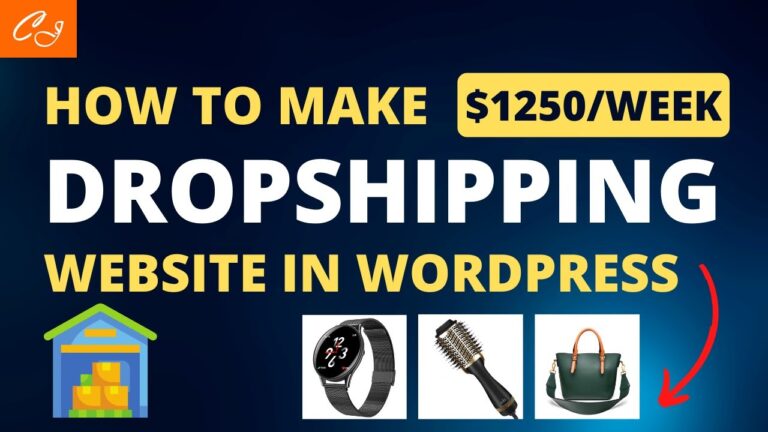Getting clients to pay on time can be challenging, frustrating, and can leave you in a financial crunch. However, there are ways to cash in quickly and get clients to pay you on time.
“Their payment is 30-days past due,” a WordPress developer yells as he looks through his invoices. “Ugh. Are they EVER going to pay me?”
Most clients are consistent and simply pay the tab without you even having to think about it. Still, let’s say you have a client that won’t pony up on or before the due date.
(Gulp!) What can you do?
As you’ll read in this article, there are many strategies and approaches that you can make; whether you’re an agency, a WordPress freelancer, or whatever it is that you do that requires an invoice.
We’ll be going over:
-
- Ways to Ensure Clients Pay Their Invoices On Time
- Tips for Getting Clients to Pay Quicker
- How to Avoid Not Getting Paid
- WPMU DEV Members Chime in on What They Do When Clients Don’t Pay
At the end of this article, you’ll be able to rest easy knowing that your hard-earned work paid off and your client has the check in the mail (or sent cash digitally, of course)!
Let’s start with…
Entrepreneur mentions that 82% of small businesses fail due to poor cash-flow management. Therefore, it’s vital to have systems in place to ensure you’re financially in good shape.
The good news is a lot can be done to prevent any payment mishaps. Here are seven vital preventative measures you can implement to get paid on time.
1. Establish Exact Payment Terms
Putting together a payment term (or contract, which I’ll discuss later) from the start will ensure your clients know what they will be paying for right off the bat. In addition, this will eliminate any surprises throughout the process, so a solid agreement that puts the process down on paper and payment expectations is good to have.
Be sure to include any payments needed before, during, and after the project. Set a timeline and communicate with your client to ensure that it works okay for them.
You can easily set up an eDoc that both parties sign. That way, in case a client wouldn’t pay, you have it in writing with verification that the project is mutually agreed upon.
Our very own Forminator allows for an e-signature that you can implement simply and quickly for free. Or there are other options, such as companies like DocuSign.

Once you have payment terms set up, it provides an entire roadmap for the project and payments, which makes it easy for the client to pay on time.
2. Invoice on Time
Invoicing on time sounds obvious, but it’s true, and it’s easy to get behind with billing. If you want to be paid on time — invoice on time.
Doing this also shows your professionalism by being punctual.
Be sure to set up a billing system that will keep you organized and help ensure your invoices head to clients in a timely manner. There is software such as QuickBooks, Xero, and Wave that can help.
3. Reward Early and On Time Payment
Having a good incentive (aka – reward) of paying early is a great way to ensure timely payments.
For example, you can have a percentage off their invoice, a discount for next time, or a free perk (which can be a WordPress maintenance service or something else of value).
It doesn’t have to be anything major. Small incentives go a long way.
4. Switch to a Retainer-based Model
Instead of billing hourly, you may want to use a retainer-based payment model instead. This means that your client will pay a set amount each month for specified services.
Your client will know what they’re paying, and you can even set up a recurring billing that goes directly into your account each month.
5. Offer a Recurring Payment Option
I touched on recurring billing with the retainer-based model, but I’ll mention it again on its own because it can alleviate any payment woes easily. This is a great method if you have long-term clients that you work with regularly.
It also makes it easier for you and your clients to focus on the projects rather than billing dates. Plus, it’s simple to set up an exact date each month, quarter, year — whatever works best for you and your clients.
It’s better to set up a base amount, and then show clients any additional costs that may be added on.
Software such as Chargebee can help, and Forminator is also introducing a recurring payments feature in its next release – we’ll let you know when it’s here.
6. Automate Your Invoice Process
The more you can automate your invoice process, the better. This can help you avoid forgetting to send out an invoice and stay on top of your billing.
There are several ways to do this; everything from scheduled payment reminders to outsourced accounting and bookkeeping services.
This can keep you honed in on the project and let billing take care of itself.
7. Add Payment Links Directly in the Invoice
Adding payment links to invoices is simple and effective. This makes it so clients can quickly pay right on their invoice instead of sending a check, logging into a new account, or delivering payment in person.
Having a clickable payment solution directly in the invoice itself makes it easy for the client and is easier for you to ensure that you get paid on time.
are a lot of scammers out there that target freelancers, including WordPress developers. If they’re persistent about sending a check or if it’s not from a company email, investigate further.
One spam that’s surfacing quite a bit is a “client” sends freelancers out a check and wants the freelancer to cash it as soon as possible. Once cashed, the “client” says that they accidentally overpaid and wants some of the money wired back.
Ultimately, the check that was cashed isn’t real and the scammers get the funds wired to them — and the freelancer is out the amount of money sent.
A scammer won’t only not get you paid — you’ll lose money.
2. Make a Contract
A contract sets up terms from the start, letting your client know what their expectations in terms of payment are right from the start. It can outline all of the payment details, along with the scope of the work.
Plus, you can include your fees for late payment and more, so there’s no sticker shock.
At the end of the day, this is also a confirmation that the client agreed to the terms, and you can use this to get your payment if you need to take legal action.
3. Ask for Upfront Payments
You probably won’t (and shouldn’t) ask for the entire amount upfront because clients want to see a completed project. However, never hesitate to ask for 50% or more to start a project and then the other 50% before final delivery.
This leads us to…
4. Don’t Deliver Work Until You Get the Payment
If you ask for 50% upfront and the other 50% before final delivery, make sure you get paid before delivering the goods. And if you go back to your contract terms, include this in there as well.
It’s not holding the work for ransom. It’s just an assurance that you’ll get paid and that the client will get what’s due to them.
5. Charge Late Fees
Nobody wants to pay more than they have to, so including late fees on your initial contract will help ensure the client pays on time. Saving money is always a big incentive for clients to pay on time.
6. Stop Working
Depending on what situation you have set up, whether that be 50% upfront or payment terms while you work, if a client stops paying you — stop working.
The client initially contacted you or started working for them because you offered something of value. So, if you stop working, that can be a great cause for them to pay since they’ll want it completed.
7. Seek Legal Action
Hopefully, it doesn’t come to this. Legal action can be costly (for both you and your client), time-consuming, and cause headaches. This is the last resort after trying everything, and your client still won’t pay.
Most lawyers can often give a free consultation to see if it’s worth pursuing or not. And you do have laws on your side when it comes to getting paid.
For example, in New York City, the law stipulates that jobs paying $800 or more must be paid to the freelancer by a specified date or 30 days upon completion.
This may end your relationship with your client, but if it pays off and you’ve done your work, and everything stipulated in your contract, then hiring an attorney might be worth it.
Discussion of the Week (DOTW), we asked members several questions about what they do if a client doesn’t pay them.
A specific question was: What do you do when you deliver the project on time, but the client is not paying on time?
There were some interesting answers, and we’ll share a handful of them. Here are how our members handle this sticky situation.
“No pay, no key. Never deliver the keys of a house that wasn’t fully paid.”
— Fabio Fava: https://fabiofava.com/
“I ask for a deposit upfront and milestone payments throughout the project. I will only send a site live – which means transferring it to the clients hosting account and activating it – when 95% of the fee is paid.
There’s a balance between ensuring we’re paid for our work and our clients trusting they’re going to get what they requested.”
— Ask Charly Leetham: https://askcharlyleetham.com
“Depending on our relationship to the client and their attitude, we either negotiate a new payment schedule or take the site offline. In cases where a mutual friend or colleague referred a client, I would report the delinquent client to the referrer.”
— Kahn
“My clients come to me by word of mouth, so they know what I stand for and they are in my extended circle. That type of client relationship is less likely to create payment issues.”
— Wim: www.wildvanvorm.be
“I faced this a few times at the beginning of my “career” (if I can call it that).
Now it’s super simple: websites are developed on my server, and once the project is done, the last payment has to be done BEFORE migration. This is really mandatory and has to be clarified at the beginning of the project.
The client needs his website to be online on a specific date? Then go on MARGINS again, and be sure to have a few days/weeks if you need to be paid before. There is always a solution (temporary DNS change to redirect domain on your server, etc.). But be paid before the last delivery.
It’s not about trusting the client; it’s about safety.”
— Guirgro: https://john-doe.fr
“I use the following debt collection email. Thankfully I’ve only ever needed it once or twice, but when needed it has helped.”
Hi [..],
A quick note to say that I am really disappointed that you have still not paid me the [..] that I’m owed for the work I did for you. In the grand scheme of things, it’s not a lot of money, but actually, I think that this is more a matter of respect.
I have always been there at the drop of a hat to sort out any problems you might have. I love working with you and have always taken our relationship as more than just client/supplier. But if I can’t rely on you paying promptly or it takes several attempts and reminders to get my money, that’s not good business.
I’m not saying that I don’t want to work with you, I do. But if I don’t receive what I am owed within the next couple of days, I will have to think twice about helping you in the future.
Best regards,
[Your Name]
— Kyler Ayim: Founder of Life Coach Sites Made Easy https://lifecoachsitesmadeeasy.com/
“I used to do this and it was the worst. I just bugged them a ton. But it was way more work than I’d like. So, I’ve recently adopted a new contract from Monster Contracts (written specifically for WordPress projects and site management services) and that gave me this idea: Now I require 50% upfront and 50% before delivering the project.
I try my best to never deliver before getting payment because people, even if they’re not malicious, will just forget or it will not be a priority to them now that they have the delivered project.”
–Michael McCall: https://www.linkedin.com/in/jmichaelmccall/
“One of the biggest parts of our contracts is payment incentives and payment options. Our clients can pay as we hit milestones to make it easier on their wallets. Or they also have the normal Net 30, but then discounts if they pay for milestones, discounts if they pay Net 5, Net 10, Net 15.
Most of the time we have found that if you tell a customer that they could say even as little as $100 by paying within 5 days, they will do it!
The other side of this is late payment penalties. If they do not pay on the agreed-to terms, then those incentives are basically turned around. If the bill is Net 30, then at 45 days they would owe 5% more to their bill.
At 60 days they would owe 10% more. This is not something that would later be non-negotiable. However, most of the time we have made “1-time exceptions” since our main business focus is towards already struggling small businesses.”
–Todd Stratton: Boofola LLC https://boofolallc.com
“For smaller projects where we are not hosting the site or controlling the domain name, we either ask for a deposit upfront and then payments according to a schedule. If payments are missed, work stops. If the project is really small in terms of time and money, we have sometimes done work on faith alone. For larger projects, we typically set a deliverables schedule and payment timeline. Again, if payments are delayed without cause, work stops.”
–Jay Burton: http://nunaehf.com
“This sometimes happens with print design work, especially for events. I have a client who always asks for an extension so he can get ticket sales first.
So eventually, I just had to say something like, ‘Hey, so I need to keep an eye on how my income is balanced while scheduling new projects. Normally I do a one-week invoice deadline but I could do two weeks going forward for your projects if that will help and perhaps allow time for a few presale tickets to come in.’
It’s still sometimes a challenge but my system sends the auto-reminder emails and it’s usually fine now. I’ve had to be pretty direct before but so far I’ve never had anyone flat-out ghosts me forever.
I also make sure the client understands when it’s their fault – gently at first, but sometimes a quick ‘wanted to check in on this stuff you need to send me because we’re a bit behind and I can’t move forward without it’ email does the trick.”
— Greg Storkan
It All Pays Off

You hear a ding from your phone. “I just sent that invoice, and my client already paid!” the WordPress designer says to himself as he looks at the notification. “Woo-hoo!”
As you can see, there are ways to ensure you don’t get the non or late payment blues. It’s a matter of good communication, having a great relationship, being organized, and establishing details before you start.
Plus, there is a lot of software out there that can help, such as Forminator and QuickBooks.
Once you get in a good habit of following these guidelines, you can rest easy knowing that payment for your work is coming and you won’t have to worry about not cashing in.
Source: wpmudev.com

